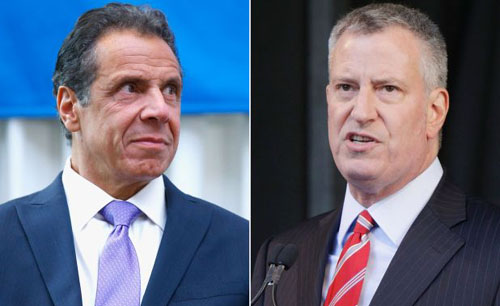WorldTribune, April 17, 2020
Analysis by Paul Crespo
While much of the media is obsessively focused on savaging the performance of President Donald Trump during the coronavirus pandemic, few are questioning why so many of the nation’s COVID-19 cases are in one state, and in just one city.
According to the World Economic Forum (WEF), New York state’s confirmed number (as of few days ago over 160,000) is even higher than in any single country outside the U.S. Worse yet, nearly two thirds of the state’s COVID-19 deaths are in New York City alone.

On Tuesday, ABC News reported that the New York City’s Health Department raised those numbers even higher. It revised its estimated death toll upward, attributing 3,778 more deaths to the coronavirus, officially citing them as “probable” cases. This pushes the city’s estimated death toll past 10,000 and puts the statewide toll at about 15,000.
Whether this new estimate is accurate is yet to be seen, but the question should be — why New York?
Why are the numbers in New York so disproportionately high, and how did the state and city fail to prepare and manage this crisis?
According to a New York Times report, both the city and state made critical errors — as late as February and March — which allowed the virus to enter and spread throughout the city and state.
In late February the first confirmed COVID-19 case in New York City arrived through John F. Kennedy International Airport on the final leg of a woman’s trip home to the city from coronavirus-infected Iran. She tested positive on March 1. Despite assurances from both Gov. Andrew Cuomo and Mayor Bill de Blasio that health investigators would track down every person on the woman’s flight, the New York Times reports that was not followed through on.
And while the media continues to critique Trump’s early January-February comments expressing confidence in limiting the pandemic in the U.S., Cuomo expressed similar bravado when he said on March 2: “So, when you’re saying, what happened in other countries versus what happened here [in New York], we don’t even think it’s going to be as bad as it was in other countries.”
The New York Times continues:
A day later, a lawyer from New Rochelle, a New York City suburb, tested positive for the virus — an alarming sign because he had not traveled to any affected country, suggesting community spread was already taking place.
Although city investigators had traced the lawyer’s whereabouts and connections to the most crowded corridors of Manhattan, the state’s efforts focused on the suburb, not the city, and Mr. de Blasio urged the public not to worry. “We’ll tell you the second we think you should change your behavior,” the mayor said on March 5.
While the Times then predictably attempts to deflect the blame back to Trump and the federal response, the fact is in the U.S. the states are the first line of defense. As with all natural disasters, the federal government only provides help and support if the states are overwhelmed.
Any lack of coherent federal guidance, or limited test kits, is no excuse for the state and city’s abysmal failure. The city and state are also responsible for ensuring their health systems and medical stockpiles are in good order and properly stocked for emergencies.
Dr. Thomas R. Frieden, the former head of the Centers for Disease Control and Prevention (CDC) and former commissioner of New York City’s Health Department, places most of the blame on the city and state. He was cited by the Times as saying that “if the state and city had adopted widespread social-distancing measures a week or two earlier, including closing schools, stores and restaurants, then the estimated death toll from the outbreak might have been reduced by 50 to 80 percent.”
But New York only mandated those measures after localities in states including California and Washington had done so. As the Times reported, de Blasio finally ordered schools in New York to close on March 15, when the city already had 329 cases. New York State’s stay-at-home order didn’t come until March 20.
So, while the federal government’s early response may have been lacking in many ways, New York City and state failed even more spectacularly well into late March. These failures are what made New York the new epicenter of the coronavirus pandemic. The media should be more focused on that.
Intelligence Brief __________ Replace The Media
